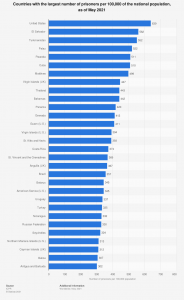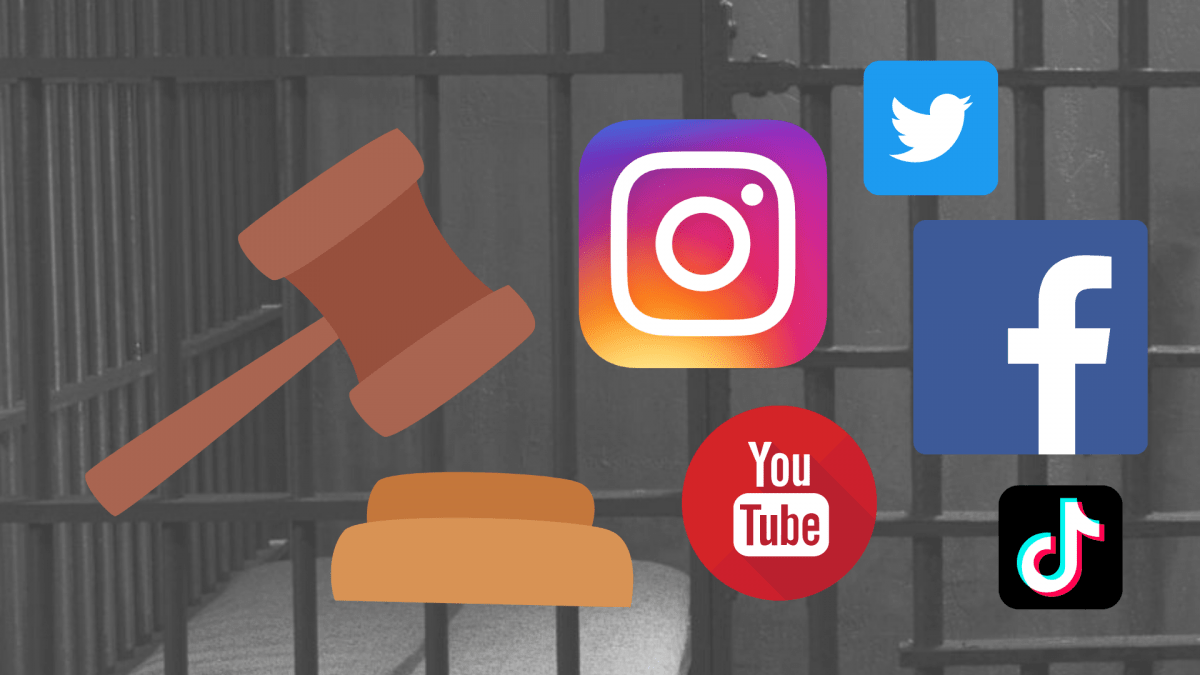Mass Incarceration in the US – A Costly Issue
The United States has a costly over-incarceration issue. As of May 2021, the United States has the highest rate of incarceration in the world with 639 prisoners per 100,000 of the national population. New York State alone has more prisoners than the entire country of Canada. In 2016, the US Government spent over $88 billion on prisons, jails, parole, and probation systems. Not to mention the social cost of incarcerating nearly 1% of our entire adult population. Alternative sentences can provide a substitute for costly incarceration.

What Are Alternative Sentences?
Typically, punishment for a crime is imprisonment. Alternative sentences are sentences other than imprisonment, such as:
- community service,
- drug rehabilitation programs,
- probation, and
- mental health programs.
While many generalizations about alternative sentences cannot be made, as the results vary by program and location, alternative sentences can and do keep people out of the overcrowded, problematic prison system in the US.
Could Social Media Play a Part in Alternative Sentencing?
In June 2021, a tourist in Hawaii posted a video of herself on TikTok touching a monk seal. The video went viral, and copycats hopped on the trend of poking wildlife for views. Hawaiian people, outraged, called for enforcement action and local media outlets echoed their call. Eventually, the Hawaii Governor released a statement that people who messed with local wildlife would be “prosecuted to the fullest extent of the law.”

There are essentially three avenues of prosecution for interfering with wildlife: in federal court, state court, or civil court through the National Oceanic and Atmospheric Administration. Disturbing wildlife is a misdemeanor under federal law, but it’s a felony under state law, with a maximum penalty of five years in prison and a $10,000 fine. However, enforcement is unlikely, even after the Governor’s proclamation. Additionally, when enforcement does take place, it often happens out of the public eye. This imbalance of highly publicized crime and underpublicized enforcement led to a suggestion by Kauai Prosecuting Attorney Justin Kollar.
Kollar suggested sentencing criminals like the Hawaiian tourist to community service that would be posted on social media. Kollar looked to Hawaii’s environmental court as a potential model. Established in 2014 for the purpose of adjudicating environmental and natural resource violations, the environmental court has more sentencing tools at its disposal. For example, the court can sentence people to work with groups that do habitat restoration.
According to Kollar, requiring criminal tourists to take time out from their vacation to work with an environmental group — and possibly publicizing the consequence on social media — would not only be a more productive and just penalty, it would also create a positive and contrite image to spread across the internet. The violators would have an opportunity to become more educated and understand the harm they caused. Kollar wants people to learn from their mistakes, address the harm they caused, and take responsibility for their actions.
In an age when many crimes are visible on social media, what would be the pros and cons of using social media as a sentencing tool?
Some Pros and Cons of Using Social Media as a Sentencing Tool
In law school, we’re taught the theories of punishment, but not the consequences of punishment. While it’s important to think about the motivation for punishment, it’s equally, if not more, important to think about what happens because of punishment. In the case of using social media as a sentencing tool, there would likely be pros and cons.
One pro of using social media to publicize enforcement would be a rebalancing of the scale of crime v. enforcement publicity. This rebalance could help prevent vigilante justice from occurring when there is too big of a perceived gap between crime and enforcement. For example, when the TikToker posted her crime, she began to receive death threats. Many Hawaiians are fed up with their environment being exploited for financial profits. The non-enforcement and bold display of a wildlife crime led them to want to take matters into their own hands. In a situation like this, society does not benefit, the criminal does not learn from or take responsibility for their actions, and the victim is not helped.
An alternative sentence of wildlife-related community service publicized on social media could have benefited society because there is justice being done in a publicly known way that does not contribute to costly mass incarceration; helped the criminal learn from and take responsibility for their actions without being incarcerated; and, helped the victim, the environment, via the actual work done.
Additionally, this type of sentence falls into the category of restorative justice. Restorative Justice (RJ) is “a system of criminal justice which focuses on the rehabilitation of offenders through reconciliation with victims and the community at large.” The social media addition to an alternative sentence could provide the reconciliation with the “community at large” piece of the RJ puzzle. This would be a large pro, as RJ has been shown to lower recidivism rates and help victims.
While these pros are appealing, it is important to keep in mind that social media is a powerful tool that can facilitate far-reaching and lasting stigmatization of people. Before the age of social media and Google, a person’s criminal record could only be found in state-sponsored documents or small write-ups in a newspaper. As social scientists Sarah Lageson and Shadd Maruna put it, “although these records were “public,” they often remained in practical obscurity due to access limitations.” Today, any discretion, or presumed and unproven discretion in the case of online mug shots and police use of social media, can be readily found with a quick search. This can increase recidivism rates and make it harder for people with a criminal record to build relationships, find housing, and gain employment. The consequences of a readily available criminal record result in punishments not fitting to many crimes, as stigmatization is a part of punishment. Using social media as a sentencing tool could make the stigmatization situation worse, a huge con.
Perhaps there is a middle ground. To protect people from long-term stigmatization, faces and other identifying features could be blurred prior to publication. Similarly, identifying information, like names, could be excluded from the posts. By keeping the perpetrators anonymous, the scale of crime v. enforcement publicity could be rebalanced, the community aspect of RJ could be accomplished, and harmful stigmatization could be avoided. To completely avoid the possibility of stigmatization via social media postings, the program coordinators could post adjacent content. For example, they could post a before and after of the service project, completely leaving out the violators, while still publicizing enforcement.
Any iteration of the idea to use social media as a sentencing tool should be studied intensely regarding its consequences related to society, the criminal, and the victim, as it is a new idea.
Do you think social media should be used as a sentencing tool?


